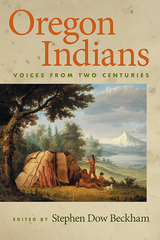

In Burn Scars, historian Char Miller assembles a collection of primary sources focused on debates over “light burning” (as prescribed or controlled burning was called). These historic documents show that not only was fire suppression controversial, but that it was also driven by explicitly racist and colonial beliefs. Yet the suppression paradigm contained within it the seeds of its destruction: Indigenous people continued to use fire as did non-Indigenous land managers. By the 1920s, scientific evidence was beginning to reveal that fire was essential for regenerating grasslands and forests; by the 1930s even the Forest Service was testing fire’s ecological benefits.
Burn Scars focuses on the burning debates of the early twentieth century, but Miller also provides evidence of a powerful counternarrative emerging from southern non-Indigenous foresters who used fire to revive longleaf pine ecosystems. The volume begins and ends with contributions from Indigenous practitioners discussing the long history and resurgent practice of cultural burning as part of traditional land management.

Explosive and original, Blood, Sweat, and Fear brings historical perspective to contemporary debates about North American workplace violence.


Nearly a third of the native fish fauna of North America lives in the arid West; this book traces their decline toward extinction as a result of human interference and the threat to their genetic diversity posed by decreases in their populations. What can be done to slow or end this tragedy? As the most comprehensive treatment ever attempted on the subject, Battle Against Extinction shows how conservation efforts have been or can be used to reverse these trends.
In covering fishes in arid lands west of the Mississippi Valley, the contributors provide a species-by-species appraisal of their status and potential for recovery, bringing together in one volume nearly all of the scattered literature on western fishes to produce a monumental work in conservation biology. They also ponder ethical considerations related to the issue, ask why conservation efforts have not proceeded at a proper pace, and suggest how native fish protection relates to other aspects of biodiversity planetwide. Their insights will allow scientific and public agencies to evaluate future management of these animal populations and will offer additional guidance for those active in water rights and conservation biology.


Outlining thirty-eight of the best Mount Rogers trail experiences, Molloy gives readers helpful insights and data, including trail distances, difficulty ratings, estimated hiking times, trail highlights and hazards, and elevation changes, as well as his own qualitative scoring on elements such as scenery, solitude, and family- and pet-friendliness. His trail descriptions are personable, direct, and precise, giving travelers and hikers a well-rounded and no-nonsense description of the area section by section. While seasoned hikers may recognize iconic Mount Rogers landmarks along the Appalachian Trail or the Virginia Creeper, beginning adventurists or those new to the area will encounter them for the first time—and find hidden gems as well.
Along with the Great Smoky Mountains National Park and Shenandoah National Park, crown jewels of the Southern Appalachians, the Mount Rogers wilderness beams with biodiversity and life, a treasure not just for hiking but also for backpacking along rolling Appalachian ridges, fishing in pristine mountain creeks, and swimming in crystal-clear waters. Best Hikes at Mount Rogers highlights it all, offering readers a helpful companion to the challenges and rewarding experiences of Mount Rogers’s 154,000 acres of natural wonder.
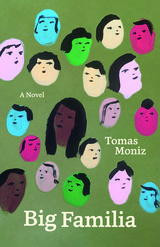
Upon the unexpected death of one of the bar’s regulars, Juan is sent reeling, and a series of upheavals follow as he both seeks and spurns intimacy, pondering the legacy of distant parents and a failed marriage and grappling with his sexuality—all the while cycling and dating, drinking at Nicks Lounge, and parenting a determined and defiant child-become-woman.
When his incarcerated father dies and Stella reveals she’s pregnant, Juan is forced to examine the emotional bonds that both hold and hinder him, to reassess his ideas of commitment, of friendship, of love. His encounters with various characters—his mother, his ex-wife, a middle-aged punker, an aspiring acupuncturist, a dapper veteran—lead Juan to the realization that he himself must change to thrive.
This is a story of making family and making mistakes, of rending and of mending. As a Latinx queer father with a mixed-race daughter, Juan exemplifies the ways identity connects and divides us. With wit, insight, and tenderness, Big Familia explores the complexities of desire, devotion, and the mysteries of the heart.
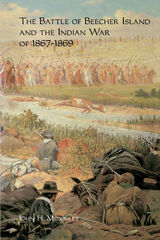
Monnett's compelling study is the first to examine the Beecher Island Battle and its relationship to the overall conflict between American Indians and Euroamericans on the central plains of Colorado and Kansas during the late 1860s. Focusing on the struggle of the Cheyenne Dog Soldiers warrior society to defend the lands between the Republican River valley and the Smoky Hill River valley from Euroamerican encroachment, Monnett presents original reminiscences of American Indian and Euroamerican participants. Unlike many military studies of the Indian Wars, The Battle of Beecher Island also includes in-depth examinations of the viewpoints of homesteaders and the views of western railroad interests of the late nineteenth century.

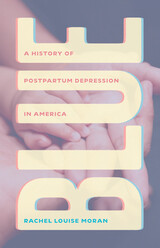
“If you begin to feel at all depressed,” the famous pediatrician Dr. Benjamin Spock advised new mothers, “go to a movie, or to the beauty parlor, or to get yourself a new hat or dress.” Such was the medical expertise on postpartum depression in the postwar United States. For much of the twentieth century, postpartum depression—and, more broadly, postpartum mental illness—had not been considered a fit subject for public discussion or even psychological discourse, let alone political action. But that was about to change.
In Blue: A History of Postpartum Depression in America, Rachel Louise Moran explores the history of the naming and mainstreaming of postpartum depression. The push to define and diagnose postpartum is owed in part to the feminist women’s health movement, but it emerged as an independent grassroots force. Coalitions of maverick psychiatrists, psychologists, and women who themselves had survived substantial postpartum distress fought to legitimize and normalize women’s experiences. They emphasized that postpartum depression is an objective and real illness, even as it became politicized alongside other fraught medical and political battles over women’s health.
Based on insightful oral histories and in-depth archival research, Blue reveals a secret history of American motherhood, women’s political activism, and the rise of postpartum depression advocacy amid an often censorious conservative culture. By breaking new ground with the first book-length history of postpartum mental illness in the 20th century, Moran brings mothers’ battles with postpartum depression out of the shadows and into the light.

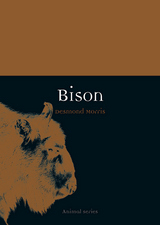
Exploring the bison’s evolution and habitat, Morris paints a nuanced portrait of this iconic animal, exploring the different sides of its personality. He shows that, while generally seen as gentle and calm, bison in fact are very unpredictable, liable to attack at any moment. Comparing and contrasting the two remaining species—the European wisent and the American bison—he goes on to tell the heartbreaking story of their near-extinction, how we hunted them down from innumerable numbers to less than a thousand, with such little regard that it was a common practice for train travelers to shoot them from their passing cars. He also tells the story of our more recent efforts—and successes—at bringing them back to such a point that their domestically raised meat has now become a popular alternative to beef. Throughout, Morris balances this natural history with a cultural one, the lore of the bison and the spirit of the west, dotting his text with vibrant images of the bison from nature, art, and popular culture. The result is an absorbing history of one of the most majestic creatures to walk the plains of the earth.

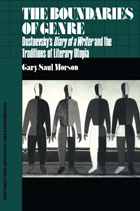

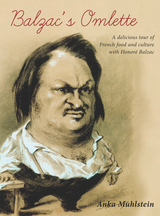
It is not a coincidence that Balzac was the first in French literature to tackle this appetizing topic. Before the French Revolution, a traveller in France was apt to find local food scarce, tasteless and of dubious appearance. Restaurants did not even exist! Just as the art of the table became a centrepiece of French mores, Balzac used it as a connecting thread in his novels, showing how food can evoke character, atmosphere, class and social pretensions. Full of insights, Balzac’s Omelette invites you to taste anew French literature and cuisine.
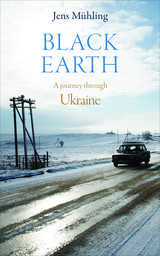
“Will someone pay for the spilled blood? No. Nobody.” Mikhail Bulgakov composed this ominous and prophetic phrase in Kiev amid the turmoil of the Russian civil war. Since then, Ukrainian borders have shifted constantly, and its people have suffered numerous military foreign interventions. Ukraine has only existed as an independent state since 1991, and what exactly it was before then is controversial among its people as well as its European neighbors.
In Black Earth: A Journey through the Ukraine, journalist and celebrated travel writer Jens Mühling takes readers across the country amid the ousting of former president Viktor Yanukovych and the Russian annexation of Crimea. Mühling delves deep into daily life in Ukraine, narrating his encounters with Ukrainian nationalists and old communists, Crimean Tatars and Cossacks, smugglers, and soldiers. Black Earth connects all these stories to convey an unconventional and unfiltered view of Ukraine, a country at the crossroads of Europe and Asia and the center of countless conflicts.
In this paperback edition, a new preface is included that takes into account recent developments up to the 2022 war between Russia and Ukraine.



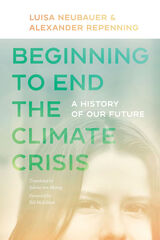
“Act as though your house is on fire. Because it is.” Following Greta Thunberg, millions of young climate activists have been taking to the streets around the globe as part of the Fridays For Future movement. They demand that we “unite behind the science,” as, for too long, climate scientists have been ringing the alarm bells about rising temperatures, tipping points, and the devastating consequences of extreme weather—but politicians do nothing.
So how do you begin to end the climate crisis? Luisa Neubauer and Alexander Repenning begin by telling stories. Neubauer cofounded the youth climate activist group in Germany and has become its most prominent voice. In this book she and Repenning weave in personal accounts of their evolution as climate activists with a thorough analysis of how climate change impacts their generation, and what every one of us can and must do about it. The young and old in the United States and around the world can learn valuable lessons from their European counterparts.

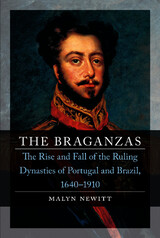
In his fascinating reappraisal of the Braganza dynasty, Malyn Newitt traces the rise and fall of one of the world’s most important royal families. He introduces us to a colorful cast of innovators, revolutionaries, villains, heroes, and charlatans, from the absolutist Dom Miguel to the “Soldier King” Dom Pedro I, and recounts in vivid detail the major social, economic, and political events that defined their rule. Featuring an extensive selection of artworks and photographs, Newitt’s book offers a timely look at Britain’s “oldest ally” and the role of monarchy in the early modern European world.
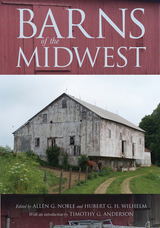
Originally published in 1995, Barns of the Midwest is a masterful example of material cultural history. It arrived at a critical moment for the agricultural landscape. The 1980s were marked by farm foreclosures, rural bank failures, the continued rise of industrialized agriculture, and severe floods and droughts. These waves of disaster hastened the erosion of the idea of a pastoral Heartland knit together with small farms and rural values. And it wasn’t just an idea that was eroded; material artifacts such as the iconic Midwestern barn were also rapidly wearing away.
It was against this background that editors Noble and Wilhelm gathered noted experts in history and architecture to write on the nature and meaning of Midwestern barns, explaining why certain barns were built as they were, what types of barns appeared where, and what their functions were. Featuring a new introduction by Timothy G. Anderson, Barns of the Midwest is the definitive work on this ubiquitous but little studied architectural symbol of a region and its history.
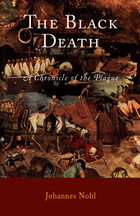
A History of the Most Catastrophic Plague Through Contemporary Accounts and How Humans Reacted
Hailed by the New York Times as "unusually interesting both as history and sociological study," The Black Death: A Chronicle of the Plague traces the ebb and flow of European pandemics over the course of centuries through translations of contemporary accounts. Originally published in 1926 and now in paperback for the first time, Nohl's volume is unique for its geographical and historical scope as well as its combination of detailed accounts and overarching contemporary views of the history of the plague in Europe, a disease that claimed nearly 40 million people during the fourteenth century alone. With current concerns about pandemics, The Black Death provides lessons on how humans reacted to and survived catastrophic loss of life to disease.
Contents
Preface
1. The Aspect of the Plague
2. The Precursors of the Plague
3. The Medical Profession and the Plague
4. Plague Remedies
5. Administrative Precautions
6. Attitude of the Church
7. The Diabolical Element of the Plague
8. Persecutions of the Jews
9. The Erotic Element of the Plague
10. The Flagellants
11. Choreomania and Children's Pilgrimages
12. Life Victorious
Bibliography
Geographical Index
Index of Persons

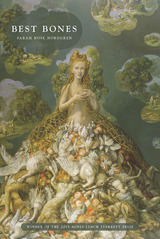
Best Bones is a house. When you walk around the rooms of the house, you overhear the desires and griefs of a family, as well as the unresolved concerns of lingering ghosts. The various voices in the house struggle against the family roles and social identities that they must wear like heavy garments—mother, father, wife, husband, sister, brother, servant, and master. All these voices crave unification; they want to join themselves into one whole sentient being, into “a mansion steering itself.”
The poems in Best Bones also explore the experience of living in a physical body, and how the natural world intersects with manmade landscapes and technologies. In it, mother has a reset button, servants blend into the furniture, and a doctor patiently oversees the pregnancy of the earth.
In these poems, the body is a working machine, a repository of childhood myth and archetype, and a window to the spiritual world. The poems strive to be visceral on the level of dream, or of a story that is half remembered and half fabricated.
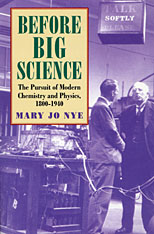
Today's vast multinational scientific monoliths bear little resemblance to the modest laboratories of the early nineteenth century. Yet early in the nineteenth century--when heat and electricity were still counted among the elements--changes were already under way that would revolutionize chemistry and physics into the "big science" of the late twentieth century, expanding tiny, makeshift laboratories into bustling research institutes and replacing the scientific amateurs and generalist savants of the early Victorian era with the professional specialists of contemporary physical science.
Mary Jo Nye traces the social and intellectual history of the physical sciences from the early 1800s to the beginning of the Second World War, examining the sweeping transformation of scientific institutions and professions during the period and the groundbreaking experiments that fueled that change, from the earliest investigations of molecular chemistry and field dynamics to the revolutionary breakthroughs of quantum mechanics, relativity theory, and nuclear science.










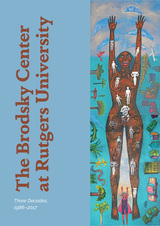
Published in partnership with the Zimmerli Museum.

The Byzantine Empire centered at the city of Constantinople grew from a small Greek colonial village into the capital of the Eastern Roman empire. Ultimately, Byzantium represented what remained of Roman power in late antiquity. Established as the seat of Constantine the Great in 328 AD, the empire grew and matured over the centuries, reaching its pinnacle in the sixth century during the reign of Justinian and his loyal general, Belisarius. In the process of empire building, Byzantium battled the Goths, the Germanic tribes, the Persians, the Lombards, and ultimately the Islamic armies of the Near East. Byzantium remained a buffer against Muslim expansion, and by the time the remnants of the empire and the city of Constantinople were finally conquered by the Ottomans in the fourteenth century, European states to the west were able to resist any further encroachment.
In tracing the empire’s history from its humble beginnings through its ascendancy and final decay, distinguished historian Charles W. C. Oman blends his engaging narrative style with his impeccable command of primary source material. Here, Oman dispels the misconception that the Byzantine court was one plagued by corruption and intrigue—a canard that added “Byzantine” to the English language; instead, Byzantium was one of the most stable governments of late antiquity. Never before reprinted in paperback, The Byzantine Empire is a model of concise popular scholarship.

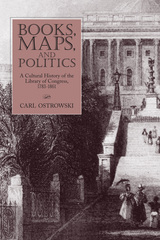
The author explores the relationship between the Library and the period's expanding print culture. He identifies the books that legislators required to be placed in the Library and establishes how these volumes were used. His analysis of the earliest printed catalogs of the Library reveals that law, politics, economics, geography, and history were the subjects most assiduously collected. These books provided government officials with practical guidance in domestic legislation and foreign affairs, including disputes with European powers over territorial boundaries.
Ostrowski also discusses a number of secondary functions of the Library, one of which was to provide reading material for the entertainment and instruction of government officials and their families. As a result, the richness of America's burgeoning literary culture from the 1830s to the 1860s was amply represented on the Library's shelves. For those with access to its Capitol rooms, the Library served an important social function, providing a space for interaction and the display and appreciation of American works of art.
Ostrowski skillfully demonstrates that the history of the Library of Congress offers a lens through which we can view changing American attitudes toward books, literature, and the relationship between the federal government and the world of arts and letters.

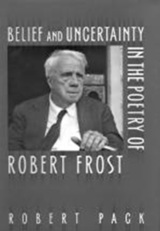
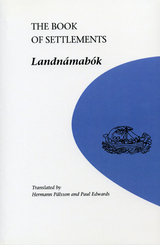
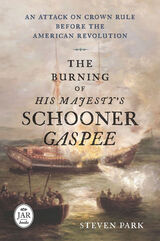
Between the Boston Massacre in 1770 and the Boston Tea Party in 1773—a period historians refer to as “the lull”—a group of prominent Rhode Islanders rowed out to His Majesty’s schooner Gaspee,which had run aground six miles south of Providence while on an anti-smuggling patrol. After threatening and shooting its commanding officer, the raiders looted the vessel and burned it to the waterline. Despite colony-wide sympathy for the June 1772 raid, neither the government in Providence nor authorities in London could let this pass without a response. As a result, a Royal Commission of Inquiry headed by Rhode Island governor Joseph Wanton zealously investigated the incident. In The Burning of His Majesty’s Schooner Gaspee: An Attack on Crown Rule Before the American Revolution, historian Steven Park reveals that what started out as a customs battle over the seizure of a prominent citizen’s rum was soon transformed into the spark that re-ignited Patriot fervor. The significance of the raid was underscored by a fiery Thanksgiving Day sermon given by a little-known Baptist minister in Boston. His inflammatory message was reprinted in several colonies and was one of the most successful pamphlets of the pre-Independence period. The commission turned out to be essentially a sham and made the administration in London look weak and ineffective. In the wake of the Gaspee affair, Committees of Correspondence soon formed in all but one of the original thirteen colonies, and later East India Company tea would be defiantly dumped into Boston Harbor.


Benito Perez Galdos and the Creative Process was first published in 1954. Minnesota Archive Editions uses digital technology to make long-unavailable books once again accessible, and are published unaltered from the original University of Minnesota Press editions.
Most critics would rank Benito Perez Galdos second only to Cervantes among the great novelists of Spain. However, in spite of the esteem in which he is generally held, Galdos has been the subject of relatively few scholarly studies. Professor Pattison, by an analysis of two of Galdos' novels, attempts to reconstruct the creative processes that were involved in the writing of these novels. This is the first time that such a critical approach has been used in the field of Spanish fiction and the resulting study is significant not only to Spanish scholars but to all students of literature seeking further insights into the fascinating and still elusive creative process.
Professor Pattison analyzes the novels Gloria, published in 1877, and Marianela,which was published the following year. Both are stories of contemporary life, the former having as its theme the conflict between noble religion and the fanaticism of individual religious sects, and the latter presenting a story of tragic love interwoven with the social problem of the responsibilities of the rich toward the poor.
In tracking down the sources of ideas, characters, plots, and viewpoints that emerge in these novels, Professor Pattison worked first-hand in Galdos' personal library in Madrid. From the notes and markings in the books and from other intimate observations, the scholar-detective put his finger on many of the original sources that contributed to Galdos' artistic creations and identified the prototypes for fictional characters among persons Galdos knew.

Pearson describes the rise of Berlin from a small settlement surrounded by bog to one of the crucial economic and political centers of Europe. Berlin is a palimpsest of a cutting edge and dynamic modern culture over a troubled history, one that is visible in bombsites, museums, late-night clubs, and even a lake that allegedly hosts a man-eating monster. He ultimately shows how the city is imbued with an array of unnerving elements: emptiness, provincialism, ramshackle industrial eclecticism, lurid and lascivious counter-cultural expressions, and a tremendous history of violence—but also that these are precisely the sorts of things that give the city its unique charge. Posing one thought-provoking question after another, Pearson walks the city’s neighborhoods, peeling back layer upon layer of history in order to reveal a Berlin that few of us know.
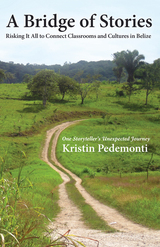
“With openhearted generosity, Kristin shares not only the story of her amazing journey but complete lesson plans and valuable tips on inter-cultural work. She deepens our understanding of the culture and legends of Belize all the while imparting courage and a can-do philosophy that could truly change the world. Read and be inspired!”
—Diane Edgecomb, author of A Fire in My Heart: Kurdish Tales
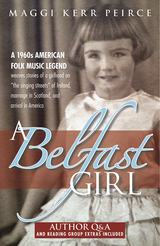
A 1960s American folk music legend weaves stories of a girlhood on “the singing streets” of Ireland, marriage in Scotland, and arrival in America
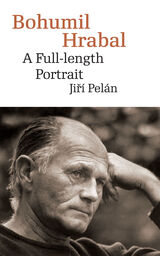



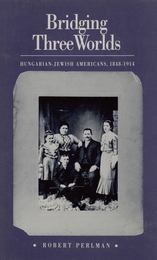
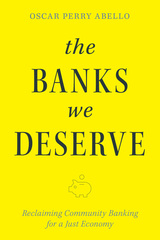
In The Banks We Deserve, journalist Oscar Perry Abello argues that community banking has a crucial role to play in addressing urgent social challenges, from creating a more racially just economy to preparing for a changing climate. At their best, community banks unleash the agency and aspirations of the communities that establish them.
Abello challenges people working on racial justice, community development, or addressing climate change to start more community banks or credit unions as part of their work, while also calling for policies and regulatory reforms that will help tilt the landscape back in favor of community banking.
The Banks We Deserve tells the stories of new community banks — like Adelphi Bank, in Columbus, Ohio, the first new Black bank in 20 years; or Walden Mutual Bank in Concord, New Hampshire, the first new mutual bank since 1973 and the first chartered specifically to finance a more sustainable food system; or Climate First Bank, in St. Petersburg, Florida, which has grown exponentially since opening for business in 2021. He hopes these stories inspire others to take some of these same daunting-but-not-impossible steps.
For a community or industry that is being ignored by big banks, the idea of starting up a new bank or credit union rarely figures as an option. In The Banks We Deserve, Abello shows advocates, organizers, and innovators that it can be done, that it is being done, and describes a path to support more community banks and credit unions.
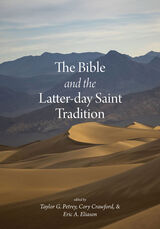
Like other Christian denominations, the Church of Jesus Christ of Latter-day Saints (Mormons) has been engaged in the battle for the Bible since challenges to biblical authority began to exert significant influence in America toward the end of the nineteenth century. Other believing communities have responded with various reevaluations of the biblical text. Latter-day Saints have experimented with similar approaches, often taking liberal positions on biblical authority and conservative positions on history and authorship. However, Latter-day Saints accept additional scripture and embrace a theology notably distinct from traditional Christianity. Hence, they relate to the Bible differently from other Christians, creating gaps with mainstream biblical studies. This volume bridges that gap.
From comparing the Book of Mormon to the Bible or the Dead Sea Scrolls, to Mormon feminists’ views on the Gospels, this volume takes a comprehensive and inclusive approach to understanding Bible scholarship’s role in Mormon history, exploring these differences for both scholars and students. A diverse group of contributors presents an accessible resource to mediate between Latter-day Saint traditions and the broader context of biblical history, literature, and scholarship. Each essay provides a synopsis of relevant major scholarly views and delivers new insights into varied crosscurrents of biblical studies.


In Bicycle City: Riding the Bike Boom to a Brighter Future cycling expert Daniel Piatkowski argues that the bicycle is the best tool that we have to improve our cities. The car-free urban future—where cities are vibrant, with access to everything we need close by—may be less bike-centric than we think. But bikes are a crucial first step to getting Americans out of cars. Bicycle City is about making cities better with bikes rather than for bikes.
Piatkowski offers a vision for the car-free urban future that so many Americans are trying to create, with no shortage of pragmatic lessons to get there. Electric bikes are demonstrating the ability of bikes to replace cars in more places and for more people. Cargo bikes, with electric assistance, are replacing SUVs for families and delivery trucks for freight. At the same time, mobility startups are providing new ownership models to make these new bikes easier to use and own, ushering in a new era of pedal-powered cities.
Bicycle City brings together the latest research with interviews, anecdotes, and case studies from around the world to show readers how to harness the post-pandemic bikeboom. Piatkowski illustrates how the future of bicycling will facilitate the necessary urban transitions to mitigate the impending climate crisis and support just and equitable transport systems.
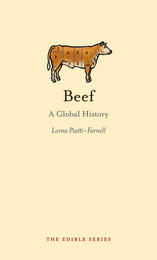
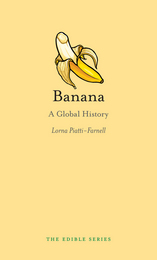
Beginning with the banana’s origins in New Guinea, Lorna Piatti-Farnell follows its pathways to South East Asia, Africa, the Caribbean, and the Americas, binding together a millennium of history into one digestible bunch. Focusing especially on the banana’s recent past, she shows how it rose from a regional staple to a global commodity, on par with coffee and sugar. She examines the ways it has been advertised, sold, and incorporated into popular culture, moving from nineteenth-century medical manuals to cookbooks, songs, slapstick comedy, and problematic figures like Miss Chiquita. Wide-ranging but pocket-sized, Banana is a culinary and cultural account of a peculiar little fruit that is at once the icon of exoticism and one of the most familiar foods we eat.

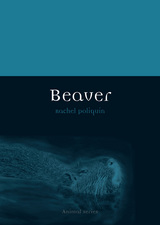
Widely hunted for their fur, beavers were a driving force behind the colonization of North America and remain, today, Canada’s national symbol. Poliquin examines depictions of beavers in Aesop’s Fables, American mythology, contemporary art, and environmental politics, and she explores the fact and fictions of beaver chain gangs, beaver-flavored ice cream, and South America’s ever-growing beaver population. And yes, she even examines the history of the sexual euphemism. Poliquin delights in the strange tales and improbable history of the beaver. Written in an accessible style for a broad readership, this beautifully illustrated book will appeal to anyone who enjoys long-forgotten animal lore and extraordinary animal biology.

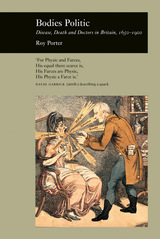

The question of possibility is raised in philosophy itself in different terms: as a question of potentiality and potentials but also as a question of the impossibilities of changing political order. In recent political discussions this question is more present than ever and is newly posed in fundamental ways by thinkers such as Agamben, Badiou, and Deleuze, or Lacan and Žižek. The present volume assembles articles that investigate this question and the new guise it took from different perspectives and highlight its relevance for contemporary political thought.

Anthony Powell’s universally acclaimed epic A Dance to the Music of Time offers a matchless panorama of twentieth-century London. Now, for the first time in decades, readers in the United States can read the books of Dance as they were originally published—as twelve individual novels—but with a twenty-first-century twist: they’re available only as e-books.
The second volume, A Buyer’s Market (1952),finds young Nick Jenkins struggling to establish himself in London. Amid the fever of the 1920s, he attends formal dinners and wild parties; makes his first tentative forays into the worlds of art, culture, and bohemian life; and suffers his first disappointments in love. Old friends come and go, but the paths they once shared are rapidly diverging: Stringham is settling into a life of debauchery and drink, Templer is plunging into the world of business, and Widmerpool, though still a figure of out-of-place grotesquerie, remains unbowed, confident in his own importance and eventual success. A Buyer’s Market is a striking portrait of the pleasures and anxieties of early adulthood, set against a backdrop of London life and culture at one of its most effervescent moments.
"Anthony Powell is the best living English novelist by far. His admirers are addicts, let us face it, held in thrall by a magician."--Chicago Tribune
"A book which creates a world and explores it in depth, which ponders changing relationships and values, which creates brilliantly living and diverse characters and then watches them grow and change in their milieu. . . . Powell's world is as large and as complex as Proust's."--Elizabeth Janeway, New York Times
"One of the most important works of fiction since the Second World War. . . . The novel looked, as it began, something like a comedy of manners; then, for a while, like a tragedy of manners; now like a vastly entertaining, deeply melancholy, yet somehow courageous statement about human experience."--Naomi Bliven, New Yorker
“The most brilliant and penetrating novelist we have.”--Kingsley Amis

Anthony Powell’s universally acclaimed epic A Dance to the Music of Time offers a matchless panorama of twentieth-century London. Now, for the first time in decades, readers in the United States can read the books of Dance as they were originally published—as twelve individual novels—but with a twenty-first-century twist: they’re available only as e-books.
The tenth volume, Books Do Furnish a Room (1971), finds Nick Jenkins and his circle beginning to re-establish their lives and careers in the wake of the war. Nick dives into work on a study of Robert Burton; Widmerpool grapples with the increasingly difficult and cruel Pamela Flitton—now his wife; and we are introduced to the series’ next great character, the dissolute Bohemian novelist X. Trapnel, a man who exudes in equal measure mystery, talent, and an air of self-destruction.
"Anthony Powell is the best living English novelist by far. His admirers are addicts, let us face it, held in thrall by a magician."--Chicago Tribune
"A book which creates a world and explores it in depth, which ponders changing relationships and values, which creates brilliantly living and diverse characters and then watches them grow and change in their milieu. . . . Powell's world is as large and as complex as Proust's."--Elizabeth Janeway, New York Times
"One of the most important works of fiction since the Second World War. . . . The novel looked, as it began, something like a comedy of manners; then, for a while, like a tragedy of manners; now like a vastly entertaining, deeply melancholy, yet somehow courageous statement about human experience."--Naomi Bliven, New Yorker
“The most brilliant and penetrating novelist we have.”--Kingsley Amis

Alan Powers gives equal weight to the technical and aesthetic aspects of modernism, as well as its often controversial reception within Britain and around the world. He examines the works of key British architects and delves into the influence of non-British architects within the United Kingdom. Powers then turns his attention to postmodern architecture as a global movement, looking at contemporary efforts to make architecture sustainable and adaptable to the new challenges of urban life.
Thoroughly illustrated with images of the buildings under discussion, advertisements, and other historical photographs, Britain is an authoritative, yet highly accessible, account of twentieth-century British architecture.
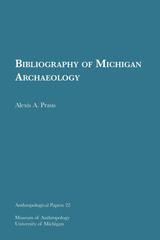

The story of queer Mormons is one that some might not expect to be joyful. The Church of Jesus Christ of Latter-day Saints has traditionally asserted that queerness is counter to God’s plan and that gender as determined at birth is eternal. Any marriage other than a monogamous pairing of male and female is “counterfeit.” So called “wickedness,” we are told, “never was happiness.”
But queer Mormons tell different stories—stories filled with joy. This collection includes essays by queer Mormons across the LGBTQ spectrum who, when they looked inside themselves, found divinity rather than sin. Stories by people who are made exactly as they are meant to be, and live accordingly.
Queer Mormons who feel forced out of the institutional church don’t typically find despair on the outside or abandonment by the divine. Instead, their lives are rich and beautiful—made all the more so by the struggle. The Book of Mormon tells us, “Men are that they might have joy.” The Book of Queer Mormon Joy affirms that trans, nonbinary, intersex, asexual, bisexual, polyamorous, and gay people have joy. Joy is for everyone.
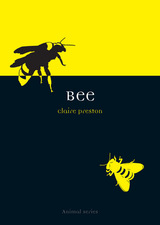
Bee traces the bee's role in art, politics, and social thought, drawing on scientific studies, literature, and historical texts. The volume examines the evolution of the bee's cultural image from a symbol of virtue and civility to the dangerous swarms of killer bees in Hollywood horror flicks. From ancient political analogies to Renaissance debates about monarchy to studies of bee behavior that portend ominous conclusions for our own socialization and use of technology, Bee analyzes the complex connections between the bee and human culture.
Written with energy and enthusiasm, Bee offers an original and fascinating meditation on this tiny workaholic.

The action began when a contingent of rangers led by Col. Thomas Knowlton of Connecticut encountered British light infantry while conducting a reconnaissance mission on Washington’s orders. What began as a skirmish transformed into a full-fledged battle as both sides reinforced, and a heavy engagement continued for several hours until, with ammunition running low, the British withdrew. Washington decided not to pursue and risk confrontation with a larger force, thereby keeping his army intact. In The Battle of Harlem Heights, 1776, David Price conveys the significance of the Continental Army’s first victory and highlights the role of one of its key participants, the largely forgotten Knowlton—the “father of American military intelligence”—who gave his life during the action while urging his rangers forward. No matter how many times U.S. Army troops have recorded a battlefield success over the past two and a half centuries—whether on American soil, in a European wood, across a Middle Eastern desert, or on a Pacific island—one thing about that history remains indisputable. They did it first at Harlem Heights.
Small Battles: Military History as Local History
Mark Edward Lender and James Kirby Martin, Series Editors
Small Battles offers a fresh and important new perspective on the story of America’s early conflicts. It was the small battles, not the clash of major armies, that truly defined the fighting during the colonial wars, the American Revolution, the War of 1812, and the hostilities on the frontiers. This is dramatic military history as seen through the prism of local history—history with a depth of detail, a feeling for place, people, and the impact of battle and its consequences that the story of major battles often cannot convey. The Small Battles series focuses on America’s military conflicts at their most intimate and revealing level.

In this gripping philosophical and cultural exploration, Teresa Präauer sets out to investigate figures of transformation, transmission, and translation—across languages, cultures, genres, media, species, and spaces. Hybrids, chimeras, monsters, and liminal creatures of all sorts inhabit these pages, as indeed they do the pages of the cultural archive from Antiquity and the Middle Ages to the present day: everything from the harpies, ape-men, and cynocephali that inhabit the edges of medieval maps and taxonomies to the Krampuses and Furries that roam through Alpine villages and convention centers today. Yet these chimeras are not aberrations; rather, they reveal an essential truth about culture and artistic expression.
What emerges in Becoming Animal is a kaleidoscopic image of culture as the constant probing of the limits of the sayable, as an unending process of attempting to capture in words and symbols that which cannot be pinned down.
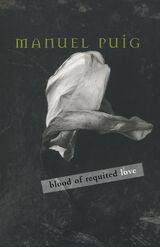

Estonia, Latvia, and Lithuania are often grouped together as the Baltic States, but these three Eastern European countries, tied together historically, are quite different. Although each is struggling to find its place within Europe and fighting to preserve its own identity, the idea of the Baltic States is a façade. In this book, Aldis Purs dispels the myth of a single, coherent Baltic identity, presenting a radical new view of the region.



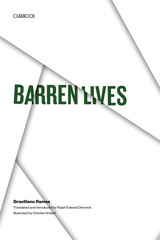
A peasant family, driven by the drought, walks to exhaustion through an arid land. As they shelter at a deserted ranch, the drought is broken and they linger, tending cattle for the absentee ranch owner, until the onset of another drought forces them to move on, homeless wanderers again. Yet, like the desert plants that defeat all rigors of wind and weather, the family maintains its will to survive in the harsh and solitary land. Intimately acquainted with the region of which he writes and keenly appreciative of the character of its inhabitants, into whose minds he has penetrated as few before him, Graciliano Ramos depicts them in a style whose austerity well becomes the spareness of the subject, creating a gallery of figures that rank as classic in contemporary Brazilian literature.
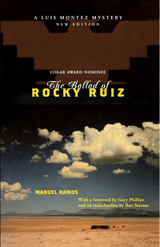
Twenty years ago, a gang attacked four Chicano student activists and shot down their leader, Rocky Ruiz. Now the survivors, Montez's former compatriots in the movement, are in danger. One is killed, another beaten, and a third driven into hiding. Enter Teresa Fuentes, a beautiful young lawyer determined to solve the mystery and just as determined to avoid becoming involved with Montez. To save his friends, Montez must reexamine the central event of their shared past-the murder of Rocky Ruiz. Just as difficult, he finds, may be to untangle his feelings for Teresa Fuentes.
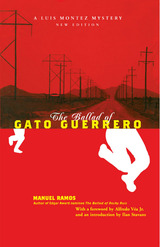
The answer: his friend, Felix "Gato" Guerrero.
Trouble has always followed the larger-than-life Felix the Cat. Now it has jumped all over him. His girlfriend is the wife of a ruthless local crime lord and in spite of bullets and hit men he won't give her up. His former father-in-law blames him for a family tragedy and is bent on revenge. Worst of all, Felix is determined to remain unaware of the dangers. It's up to Montez-and not for the first time-to step in and save him.
As in his Edgar-nominated The Ballad of Rocky Ruiz, Manuel Ramos immerses readers not only in a thrilling mystery but also in the fascinating Chicano culture of the West. Fast-paced and richly textured, The Ballad of Gato Guerrero is an entertaining addition to the acclaimed Luis Montez mystery series.
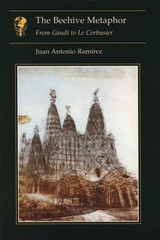
Inspired by his own father's obsession with bee-keeping – which wiped out the family's fortune – Ramírez examines the complex ideological, political and artistic repercussions of apian metaphors, thereby enhancing our understanding of the relationship between ecology, animal husbandry and architecture.
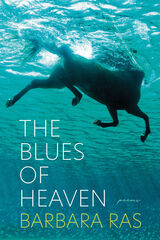

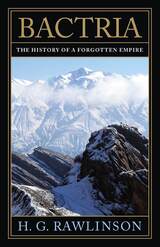
“If through the Bactrian Empire European ideas were transmitted to the Far East, through that and similar channels Asiatic ideas found their way to Europe.”—Intellectual Development of Europe
Following the Macedonian invasion of Persian in the fourth century B.C., an independent Greek-ruled empire emerged over an area encompassing modern Afghanistan, eastern Iran, and northern Pakistan. This ancient empire, called Bactria, is recorded in texts, both Asian and European, as well as through coins, inscriptions, and architectural remnants. Bactria served as a contact point between Europe, South Asia, and the Far East for more than two hundred years before disappearing under the pressure of a resurgent Persia to the west and Indian states to the east. In Bactria: The History of a Forgotten Empire, historian Hugh G. Rawlinson begins with the early history of Bactria and its subjugation by Persia, and then describes the conquest of Iran by Alexander the Great and the establishment of an independent Bactria ruled by Greeks. The Bactrians adopted Buddhism early on and helped establish the religion throughout the area. The author then follows the history of the empire through its rulers, including Menander, until Greek rule was extinguished around 135 B.C. Finally, the author discusses the effects of Greek occupation on the region. Based on meticulous research in ancient texts from Greece, Persia, and India, and using material evidence of the time, this history, which won the Hare University Prize at Cambridge in 1909, remains relevant today, providing a fascinating portrait of a little-known connection between East and West.



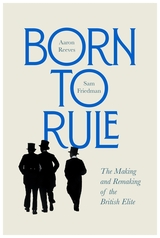
A uniquely data-rich analysis of the British elite from the Victorian era to today: who gets in, how they get there, what they like and look like, where they go to school, and what politics they perpetuate.
Think of the British elite and familiar caricatures spring to mind. But are today’s power brokers a conservative chumocracy, born to privilege and anointed at Eton and Oxford? Or is a new progressive elite emerging with different values and political instincts?
Aaron Reeves and Sam Friedman combed through a trove of data in search of an answer, scrutinizing the profiles, interests, and careers of over 125,000 members of the British elite from the late 1890s to today. At the heart of this meticulously researched study is the historical database of Who’s Who, but Reeves and Friedman also mined genealogical records, examined probate data, and interviewed over 200 leading figures from a wide range of backgrounds and professions to uncover who runs Britain, how they think, and what they want.
What they found is that there is less movement at the top than we think. Yes, there has been some progress on including women and Black and Asian Brits, but those born into the top 1 percent are just as likely to get into the elite today as they were 125 years ago. What has changed is how elites present themselves. Today’s elite pedal hard to convince us they are perfectly ordinary.
Why should we care? Because the elites we have affect the politics we get. While scholars have long proposed that the family you are born into, and the schools you attend, leave a mark on the exercise of power, the empirical evidence has been thin—until now.

––Benedict XVI, General Audience, 27 February 2013
Roberto Regoli offers a keen and comprehensive preview of Pope Benedict XVI's pontificate, which will be better understood only after time has passed and more becomes available. As an historian, Regoli provides ample context to frame the theology and pastoral priorities of a pope, professor, priest, and figure of history who has been shaped by his times, and who will undoubtedly be remembered as deeply orienting the Church toward the future. The perspective and questions offered by Regoli will likewise be a key component to the scholarship surrounding Pope Benedict's pontificate for decades to come, and he significantly broadens what has already been compiled by Anglophone writers.
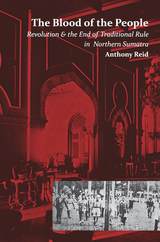
The events in northern Sumatra were among the most dramatic episodes of Indonesia’s national revolution, and brought about more profound changes even than in Java, from where the revolution is normally viewed. Some ethnic groups saw the revolution as a popular, peasant-supported movement that liberated them from foreign rule. Others, though, felt victimised by a radical, levelling agenda imposed by outsiders. Java, with a relatively homogeneous population, passed through the revolution without significant social change. The ethnic complexity of Sumatra, in contrast, meant that the revolution demanded an altogether new “Indonesian” identity to override the competing ethnic categories of the past.

From fossils to classical Greek plays to the beds of medieval travelers, history is a rash of bedbugs. So ubiquitous and so loathed are these contentious creatures, the first recorded use of the insect moniker “bug” refers to them, a word that now means any sort of glitch or invader—from computer errors to snooping devices. Lifting the covers on this pestilential history, Reinhardt shows how bedbugs were not only the center of bitter fights among scientists, but also how the bugs’ dangerous aspects were foregrounded, and how bedbugs’ peculiar mating habits fueled public revulsion. Richly illustrated, full of the latest bedbug research, and sure to make you itch, Bedbug closes with a plea for sanguine tolerance—something humans and bedbugs will need alike as worldwide infestation rates soar.

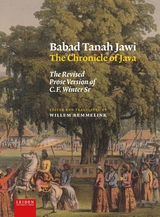
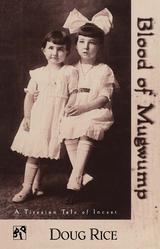


READERS
Browse our collection.
PUBLISHERS
See BiblioVault's publisher services.
STUDENT SERVICES
Files for college accessibility offices.
UChicago Accessibility Resources
home | accessibility | search | about | contact us
BiblioVault ® 2001 - 2024
The University of Chicago Press





